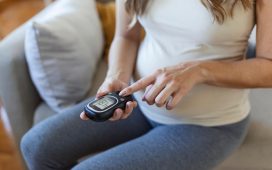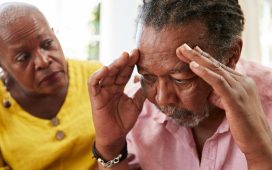Retrospective cohort study conducted in Denmark shows exposure to epidural anesthesia not linked to ASD, while second study shows slightly increased risk
WEDNESDAY, Sept. 29, 2021 (HealthDay News) — Exposure to epidural analgesia during labor seems not to be associated with autism spectrum disorder (ASD) in children in Denmark, while a slightly increased risk was seen in a second cohort in British Columbia, Canada, according to two studies published in the Sept. 28 issue of the Journal of the American Medical Association.
Anders Pretzmann Mikkelsen, M.D., from Copenhagen University Hospital-Rigshospitalet in Denmark, and colleagues conducted a retrospective cohort study involving all live-born children in Denmark between January 2006 and December 2013. The cohort included 479,178 children, of whom 19.4 percent were exposed to epidural analgesia during labor. The researchers found that 6,428 children (1.3 percent) had been diagnosed with autism by the end of follow-up (median, 7.0 years). The autism diagnosis incidence rate was 23.1 and 18.5 per 10,000 person-years in the exposed versus unexposed cohorts, respectively (adjusted hazard ratio, 1.05; 95 percent confidence interval, 0.98 to 1.11).
Gillian E. Hanley, Ph.D., from the University of British Columbia in Vancouver, Canada, and colleagues conducted a population-based retrospective cohort study involving term singleton children born in British Columbia between April 1, 2000, and Dec. 31, 2014. Data were included for 388,254 children; 28.7 percent were exposed to epidural analgesia. The researchers found that 5,192 children were diagnosed with ASD (1.34 percent). A diagnosis was made for 1.53 and 1.26 percent of children exposed to epidural analgesia versus those not exposed, respectively (fully adjusted hazard ratio, 1.09; 95 percent confidence interval, 1.00 to 1.15). However, the investigators determined that given the likelihood of residual confounding that may account for the results, the findings did not provide strong supporting evidence for an association.
“Current evidence does not justify considering risk of ASD when deciding whether to use (patients) or recommend (health care professionals) neuraxial labor analgesia,” write the authors of an accompanying editorial.
Abstract/Full Text – Mikkelsen (subscription or payment may be required)
Abstract/Full Text – Hanley (subscription or payment may be required)
Editorial (subscription or payment may be required)
Copyright © 2021 HealthDay. All rights reserved.








